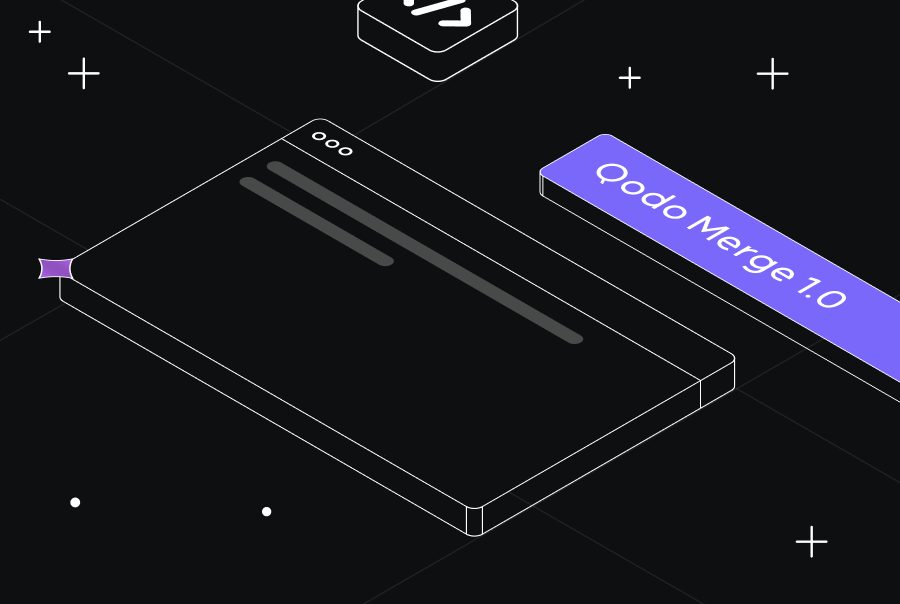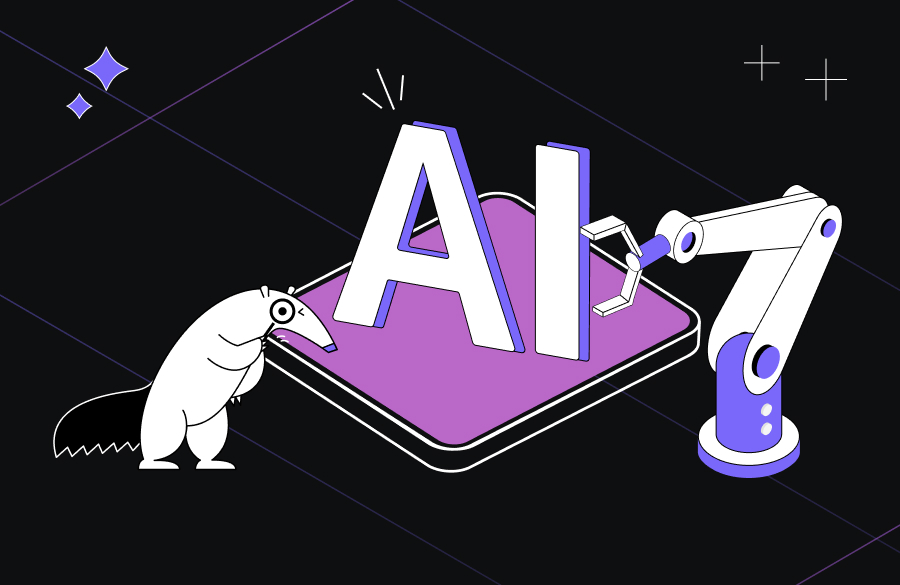Revolutionizing Code Integrity: Introducing Continuous Code Testing (CT) and Continuous Code Review (CR)
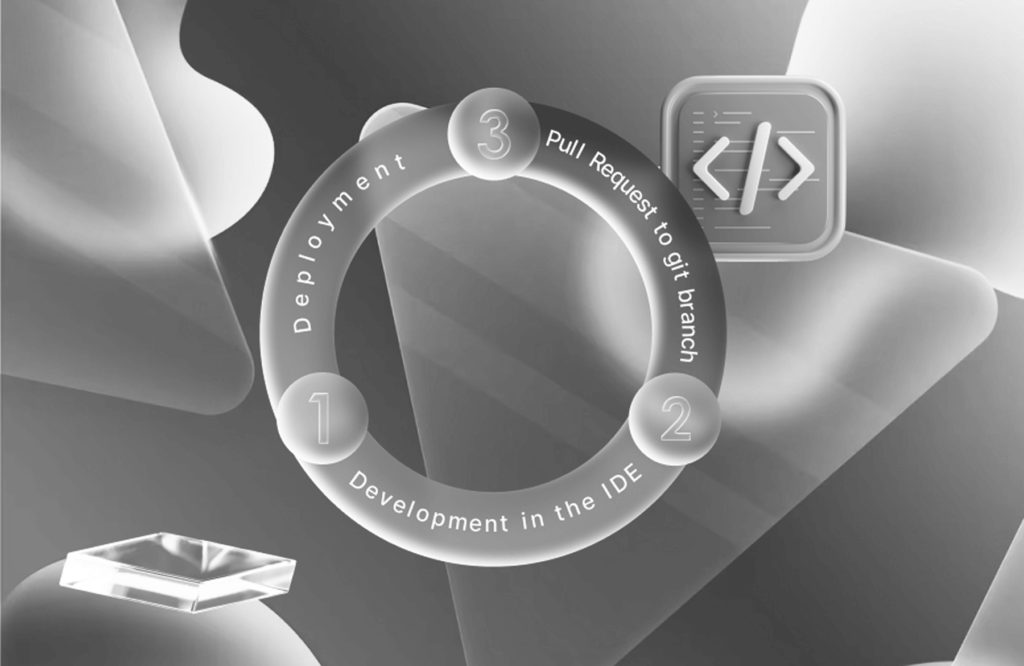

You’ve heard of CI/CD, now get ready for CR/CT
In the ever-evolving world of software development, the quest for higher efficiency, improved quality, and faster delivery has led to the emergence of innovative concepts. Continuous Integration and Continuous Delivery (CI/CD) have already transformed the industry, but we can take it a step further. In this blog post, we’ll introduce two game-changing concepts – Continuous Code Testing (CT) and Continuous Code Review (CR) – that promise to revolutionize the way we develop, test, and review code. Hopefully, by the end of this blog post, we will be able to convince you that code integrity itself is a continuous process in whatever tools a company chooses to implement it.

Continuous Code Testing (CT)
Continuous Code Testing (CT) is a paradigm shift in software development that emphasizes the importance of running tests for every commit or pull request made to the codebase. By “running tests” we mean not just regression tests that are there to make sure nothing breaks, but actual functional tests for testing the newly introduced code. Traditionally, writing tests is conducted at predetermined intervals or milestones, usually at the end of the development cycle, or in the case of TDD, before starting a development cycle. In contrast, CT ensures that code changes are subjected to automated tests immediately, making quality assurance an integral part of the development process.
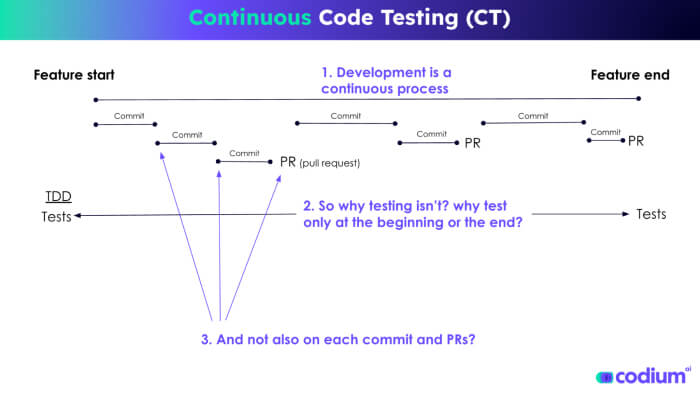
Key Features and Benefits of CT:
- Real-time Feedback: CT provides developers with rapid feedback on the integrity and functionality of their code (i.e., behaviors). By running automated tests on every commit or pull request, potential issues and bugs are identified early, reducing the time and effort required for debugging.
- Improved Codebase Stability: With CT in place, only code changes that pass the tests are allowed to be integrated into the main codebase. This prevents the introduction of faulty code, thereby enhancing the stability and reliability of the software.
- Faster Bug Detection and Resolution: By continuously testing code, CT enables swift detection of bugs and regressions, enabling developers to address them promptly. This leads to faster resolution and more reliable software.
- Greater Developer Productivity: CT automates the testing process, freeing up developers’ time and allowing them to focus on building new features and addressing critical issues.
Continuous Code Review (CR)
While code reviews have long been standard practice in software development, Continuous Code Review (CR) elevates the process to new heights. CR entails the automatic review of code changes with the help of specialized tools and algorithms (AI). These automated AI reviews complement traditional human code reviews, augmenting the team’s ability to maintain code integrity and adhere to best practices consistently. As a matter of fact, pull requests on git are not the optimal place for a developer to deal with tests and review suggestions because a. The developer is already anxious to close the task; in other words, not the state of mind to re-open the task. And b. The developer doesn’t have the right environment to make significant changes (i.e., The IDE). AI-Review allows one to perform a preliminary review while coding in the IDE.
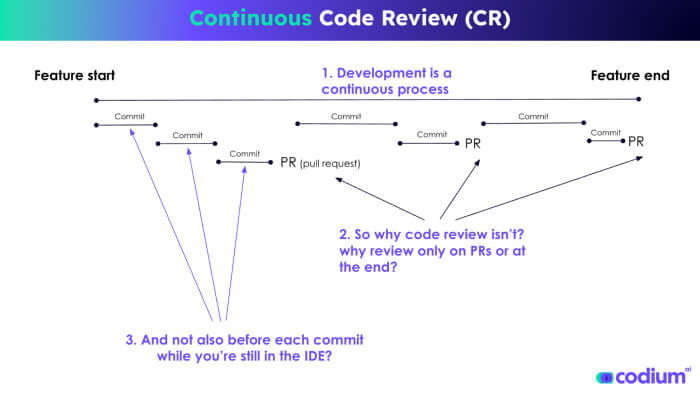
Key Features and Benefits of CR:
- Consistent Code Integrity: CR ensures that code changes align with established coding standards and best practices, promoting consistent code integrity across the entire codebase.
- Faster Code Reviews: Automated code reviews can swiftly analyze code changes and identify potential issues, speeding up the review process and reducing the review backlog.
- Early Identification of Vulnerabilities: CR tools can flag security vulnerabilities, potential performance bottlenecks, and other critical issues, helping teams address them proactively before they escalate.
- Continuous Learning: CR tools can offer insights and recommendations to developers, enabling continuous learning and improvement of coding skills.
Combining CT and CR for Optimal Results
Continuous Code Testing and Continuous Code Review work synergistically to elevate software development processes to a new level of efficiency and code integrity. The combination of CT and CR fosters a culture of excellence and continuous improvement within the development team.
So, the question arises, how should you Implement CT and CR in Your Development Workflow:
- Choose the Right Tools: Identify and integrate suitable automated testing and code review tools into your development environment.
- Define and Enforce Testing and Review Criteria: Set clear criteria for the types of tests and reviews that should be performed for every code change.
- Educate and Collaborate: Educate your development team about the benefits and importance of CT and CR, and encourage collaboration between developers, testers, and reviewers.
- Monitor and Refine: Continuously monitor the effectiveness of CT and CR in your workflow and refine the process to optimize results.
Conclusion
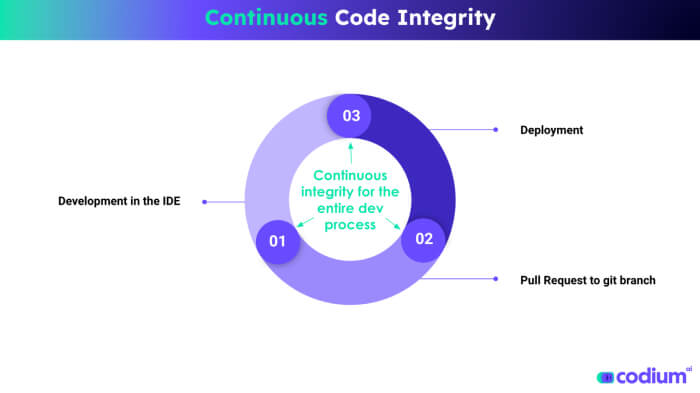
Code integrity, as code development (or code generation), should eventually become a continuous process, whether in the IDE, the git pull requests, or during integration. To demonstrate the value, we introduced the Continuous Code Testing (CT) and Continuous Code Review (CR) concepts. CT and CR are transformative concepts that have the potential to redefine software development practices. By integrating automatically generated tests and code reviews into the development process, organizations can significantly improve code integrity, accelerate delivery, and stay ahead in the competitive software landscape. Embracing CT and CR empowers development teams to build more reliable, secure, and efficient software, leading to enhanced customer satisfaction and business success.

